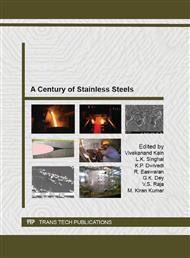p.37
p.44
p.50
p.63
p.75
p.90
p.103
p.117
p.124
Evolution of Mould Fluxes
Abstract:
Mould flux was invented for bottom poured ingots using fly ash as raw material. It transited subsequently to synthetic raw materials. As continuous casting of steel developed, Fluxes in fine powder form evolved culminating to the development of environment friendly fluxes in granular form. As continuous casting of stainless steel commenced different powders were developed for different Stainless qualities like austenitic, ferritic etc. Powders developed from interface with users were not only to satisfy demand of lubrication in the mould but also for adequate heat transfer and better surface quality. Shrinkage in mould, interplay of the elements in steel during casting with mould slag, tendency of the steel grades towards cracking or sticking and influence of various casting parameters determined mould powder development and usage. In-mould Powder performance dynamically reacts to changes in casting parameters and conditions and appropriate changes in powder chemistry can overcome or minimise detrimental effects of such changes. Future demands of overall cost control, better surface quality, minimal grinding, stable meniscus will guide powder research and development alongwith focus on environmental concerns.
Info:
Periodical:
Pages:
75-89
Citation:
Online since:
September 2013
Authors:
Keywords:
Price:
Сopyright:
© 2013 Trans Tech Publications Ltd. All Rights Reserved
Share:
Citation:


